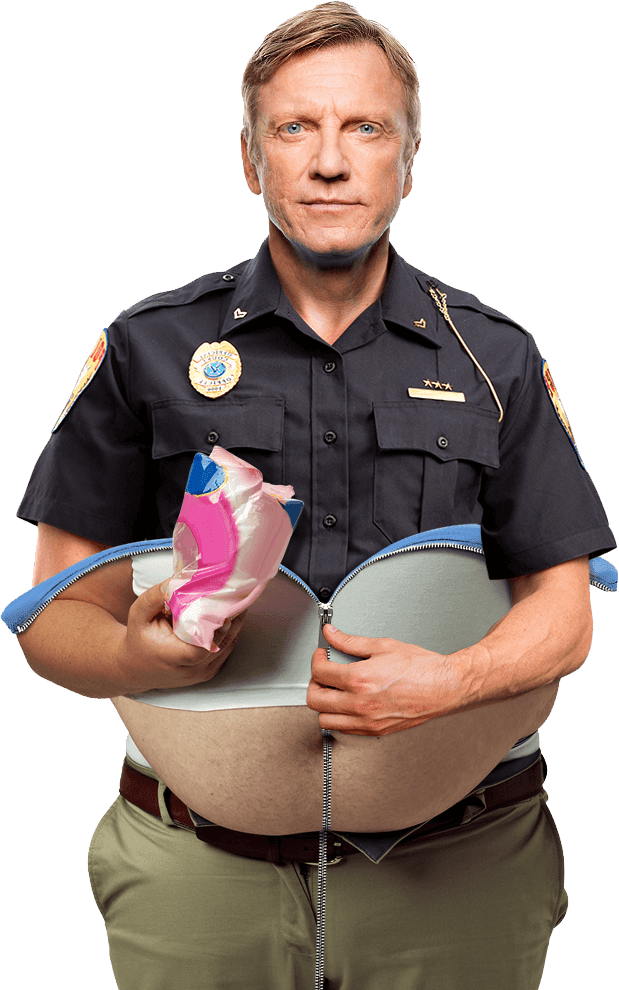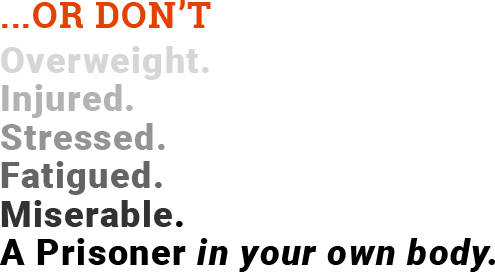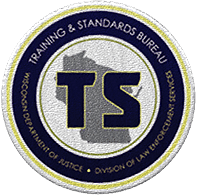
Montana Police Academy entry and passing requirements:
Part One - Obstacle Course/Mobility Run
Station - Balance Beam
From a standing start, the officer runs around a cone and jumps up on the fifteen-foot balance beam, running the entire length. If he/she falls off the beam the officer must return to the course start-point and repeat the obstacle.
Assessment Elements
Job Tasks
- Pursuing a person on foot over uneven terrain
- Walking-Running while balancing on narrow elevated surfaces
Physical Abilities
- Balance
- Depth perception
- Agility
- Lower body strength
Station - Five-foot Jump Obstacle
After completing the balance beam obstacle the officer rounds another cone and jumps the five foot obstacle (designed to simulate a ditch or other opening-type obstacle). The officer’s feet (foot) cannot land within the marked obstacle perimeter.
Assessment Elements
Job Tasks
- Pursuing someone on foot
- Jumping across obstacles
Physical Abilities
- Depth perception
- Running speed
- Agility
- Lower body strength
- Core Strength
- Ability to jump
Station - Stair Climb Simulator
After completing the jump obstacle the officer rounds another cone and runs 60 feet of the course to the stair simulator. Comprised of five steps on either side, the officer runs up one side, down the other, rounds a cone and repeats the stair obstacle. The officer must hit at least one step and the top platform, going up and down.
Assessment Elements
Job Tasks
- Pursuing someone on foot
- Walking/Running Up/Down Stairs
Physical Abilities
- Depth perception
- Visual acuity
- Agility
- Coordination
- Lower body strength
- Core strength
Station - Crawl Obstacle
After completing the stair simulator obstacle, the officer runs to the crawl obstacle, drops down and goes under the 23" high bar.
Assessment Elements
Job Tasks
- Pursuing someone on foot
- Crawling through small opening
Physical Abilities
- Agility
- Flexibility
- Coordination
- Core body strength
- Core power
- Lower body strength
Station - 18-inch Barrier Jump (x2)
After completing the crawl obstacle the officer traverses the center section of the course, which contains two eighteen-inch jump barriers. These barriers are intended to represent small obstructions, such as curbs, landscape features, etc.
Assessment Elements
Job Tasks
- Pursuing someone on foot
- Jumping over common obstacles
Physical Abilities
- Depth perception
- Coordination
- Balance
- Lower body strength
- Core strength
- Ability to jump
Station - Three-foot Vault
After completing the two 18 -inch jump barriers the officer does a controlled vault of three feet, makes a two-footed landing, then drops to a prone position, rises without assistance and begins the obstacle course again.
Assessment Elements
Job Tasks
- Pursuing someone on foot
- Jump/Climb over obstacles
- Regain feet after falling/being knocked down
- Jump down from elevated surface
Physical Abilities
- Depth perception
- Agility
- Coordination
- Balance
- Core Power
- Upper/Lower body strength
Station - Fall to Back/Front
After completing the vault obstacle and returning to their feet the officer falls to stomach and then to back, recovering to their feet each time without using any assistance.The purpose of this is to simulate recovery from falling/being knocked down, after clearing an obstacle.
Assessment Elements
Job Tasks
- Physically control a person
- Pursue/Struggle with suspect
- Regain feet after falling/being knocked down
Physical Abilities
- Balance
- Core strength
- Upper/Lower body strength
Part Two - Push Pull Machine
Station - Push Pull Machine
After completing six laps of the obstacle course the officer moves to the push-pull machine. This machine simulates struggling with, and controlling a subject, and extracting subject from a car or room. It presents a standardized "fight" obstacle to each participant.
Assessment Elements
Job Tasks
- Physically control a person
- Pull-Drag a person
- Struggle/Fight with a person
Physical Abilities
- Balance
- Agility
- Core strength
- Upper/Lower body strength
Station - Fall to Back/Front
After completing the push portion machine the officer moves to a wall and executes front and back falls to the floor, simulating being knocked down or falling to the ground in a fight scenario, and recovering to feet.
Assessment Elements
Job Tasks
- Physically control a person
- Get to feet after falling/being knocked down
Physical Abilities
- Balance
- Core strength
- Upper/Lower body strength
Part Three - Dummy Drag Section
After completing the fight portion of the test, the officer is given a sixty (60) second recovery time, and then moves to a 165-pound dummy. The dummy must be moved in a controlled manner for 25 feet.
Assessment Elements
Job Tasks
- Physically control a person
- Pull/Drag a person
- Lift/Carry a person
Physical Abilities
- Balance
- Core strength
- Lower/Upper body strength
- Ability to recover (the drag takes place after running the obstacle course, participants are usually quite fatigued at this point)
 Cardio Endurance
Cardio Endurance Push-Ups
Push-Ups Injury
Injury
Top 6 ways cops are forced into early retirement:
- Arthritis
- Bone Fractures
- Soft Tissue Injuries
- Heart Disease
- Obesity
- Back Injuries
Montana police your best life Requirements:
Bench Press
Required 225 x 10
Squat
Required 500lbs
40 Yard Dash
Required 4.40s
Back Injuries
Avoid
Heart Attacks
Avoid
Tactical Functional Training
Do it
Heart disease accounts for 20-50% of all law enforcement retirements and another 15-35% due to back problemsTooker, Gregory. “Health and Fitness in Law Enforcement” 2016. PDF file.

Train Right Get home at Night™
Be fit
The modern police environment requires a cop in control of their body. Exhausted cops are less prepared for that one career defining moment. Out-of-shape cops don't just fail to pursue and apprehend perps - their careers are cut short. They burn out mentally or wind up on long term disability.
You can’t serve & protect without your boots on the ground.

Train Right Get home at Night™
Cops & future cadets:
CRUSH the physical academy requirements.
- Build habits - Don't get fat & lumpy
- Be a FIT cop - Become a TACTICAL, FUNCTIONAL athlete
Making better choices isn't just for the citizens you protect. Better health benefits YOU and your family EVERY DAY.
Boss cops:
The TFT system will identify individual officer EXPOSURE POINTS susceptible to injury. We target problem areas for strength building through a multi-level evaluation and fitness building process.
Officers get:
- Personalized feedback & control
- To become their best physical selves
- To become more productive professionally & personally
Departments get:
- Reduction in lost-time injuries
- Reduced insurance costs
“Learning and seeing the benefits of the TFT Program, I was convinced this program should be part of our Police Certification Curriculum. The TFT Program can assure the Law Enforcement Professionals can survive the physical and mental demands that this essential profession demands.”
Tony B.
Director of a State Training and Standards Bureau
Wisconsin
“Since starting this program I've lost 50 lbs. I'm sitting here competing with kids who are 10 years younger then me and SMOKIN' them in the gym now. And it just feels GREAT. This program is definitely going to give you that step up.”
Todd C.
Criminal Justice-Law Enforcement Student
Chicago, IL
“The TFT Program correlated each exercise to movements, actions, tasks, and situations an officer would find themselves in. I believe our recruits are more prepared both physically and mentally for the challenges of patrol services after completing this program.”
Officer Linda B.
Officer of Madison Police Department
Madison, WI
“The TFT Program showed me that little to no equipment is needed for a solid, well-rounded fitness program. As a member of the Dubuque Police Department's fitness committee, I highly recommend this program.”
Officer Chad C.
Officer for the Dubuqe Police Department
Dubuque, Iowa
Montana police officer salary info 2019
Number of jobs: 1600
Average annual wage: $54590
Average hourly wage: $26.24

Montana Department of Justice
Academy requirements courtesy of: https://policeacademyhub.com/
Police Academy Requirements by State:




